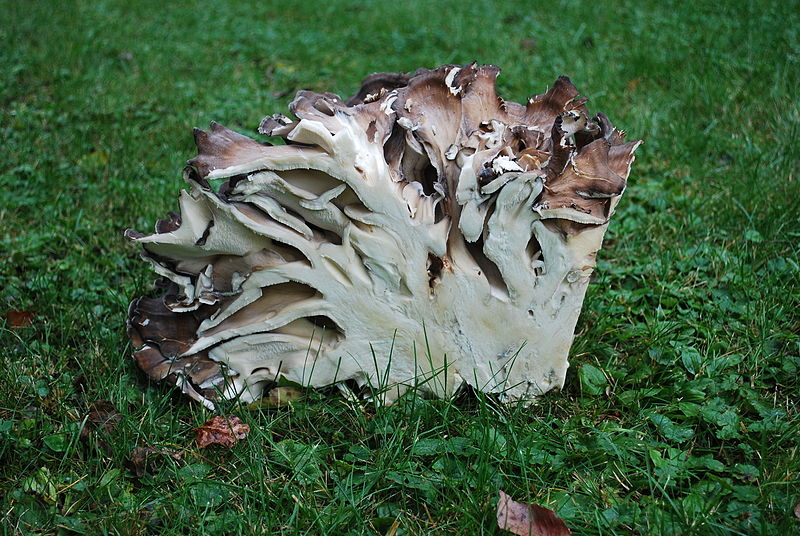Hen of the Woods Identification – Grifola frondosa
Heads up
Grifola frondosa is often referred to as the hen-of-the-woods, or maitake in Japanese, which means “dancing mushroom.”
Hen of the Woods: Key Parts in Photos



Where to find it
Hen of the Woods mushrooms are commonly found growing at the base of trees, especially old oaks or maples. If you’re in the mood for a forest adventure, the best time to find these mushrooms is during late summer to early autumn. Although they are originally from Asia, Europe, and North America, the northeastern regions of the U.S. are where they really thrive.
How to identify Hen of the Woods
This mushroom is a perennial fungus, it grows back year after year, often in the same spot. The mushroom sprouts from an underground structure known as a sclerotium. The part of the mushroom we see above the ground can get quite large, sometimes reaching up to 40 inches or even 60 inches in rare cases. What makes the Hen of the Woods particularly distinct is its appearance: it has multiple grayish-brown caps that can be curled, and they often have wavy edges. Underneath these caps are tiny pores, about one to three per millimeter.
When you’re picturing the Hen of the Woods, think of a cauliflower. The mushroom grows in circular layers, and each layer looks a bit like a tongue, all coming from one main stalk. These layers or “fronds” form a rosette that’s about the size of a large pizza. These fronds can range in color, sometimes they’re tan, other times grey, or even cream.
A key feature to remember about the Hen of the Woods is its “decurrent” characteristic. The term “decurrent” refers to the way the gills or pores of a mushroom attach to its stipe. For the Hen of the Woods, the pores beneath its caps extend downwards along the stipe.
When you find a young Hen of the Woods, take a moment to smell it. It often has a pleasant, sweet aroma. However, as it ages, this smell can change, and so can the taste. Older ones can taste a bit strong and not as pleasant.
Want to learn more?

Disclosure: This post includes affiliate links. If you make a purchase through these links, we may earn a commission at no extra cost to you. We appreciate your support, as it helps keep this website running. Alternatively, you can search for the book title on Amazon if you prefer not to use the links. Thank you for your understanding and support!
